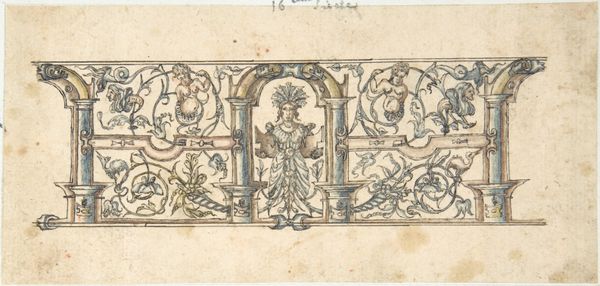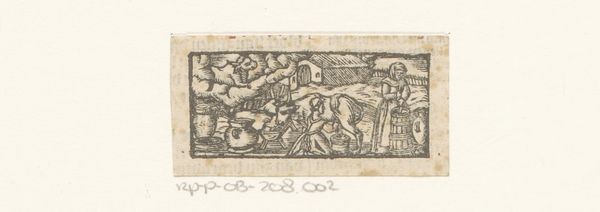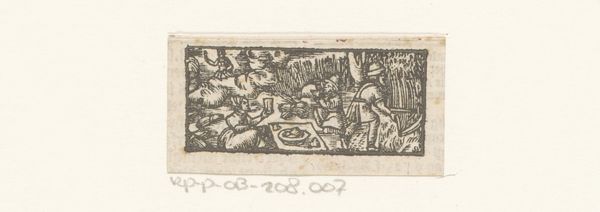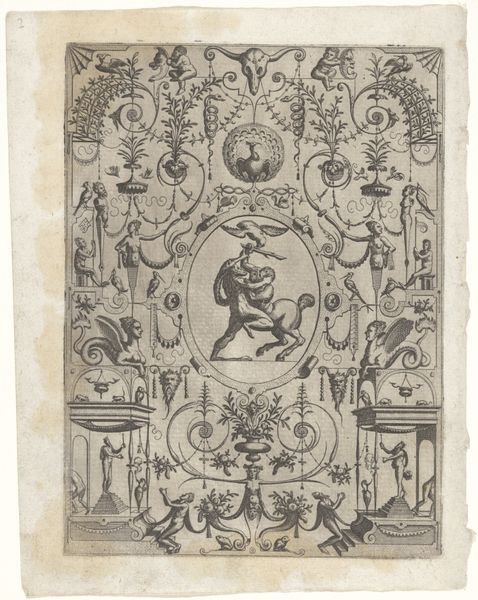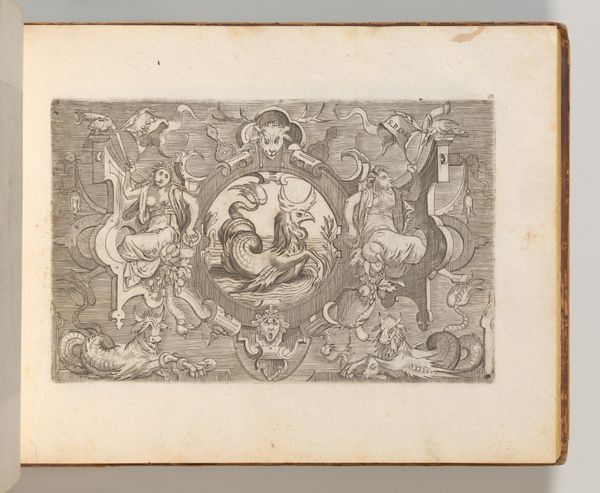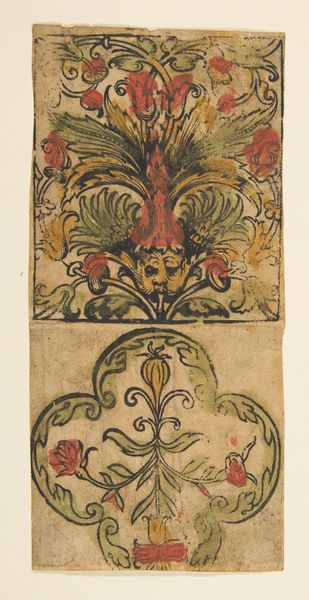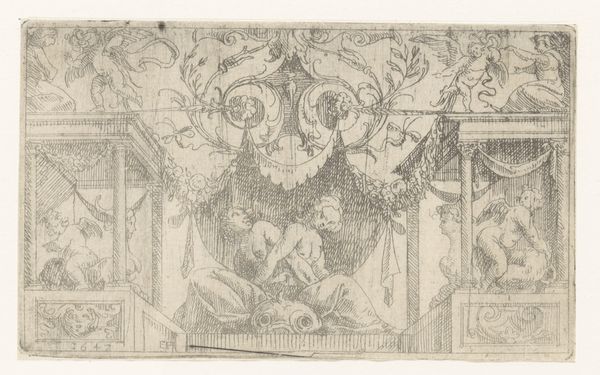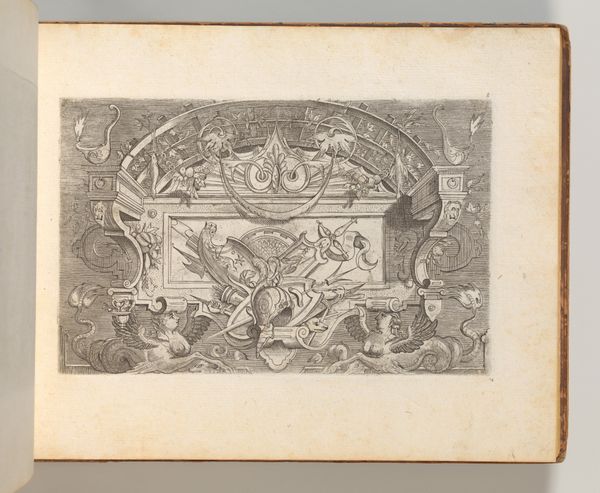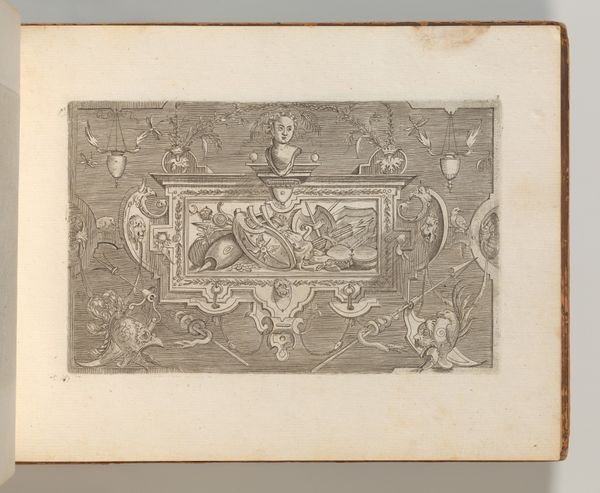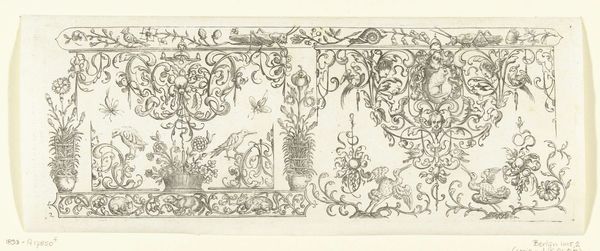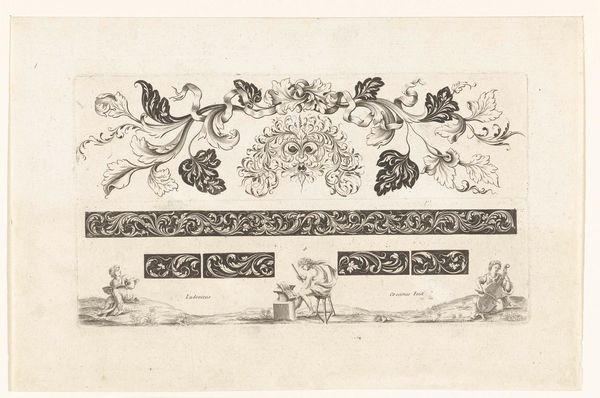
Ornamental Border of the Augsburg Diocese (Schr. 2024c) 15th century
0:00
0:00
drawing, print
#
drawing
#
medieval
#
water colours
#
narrative-art
# print
#
figuration
#
madonna
#
child
#
northern-renaissance
#
miniature
Dimensions: sheet: 2 1/16 x 9 13/16 in. (5.3 x 25 cm)
Copyright: Public Domain
Curator: This object from the 15th century is entitled "Ornamental Border of the Augsburg Diocese," currently residing at the Metropolitan Museum of Art. Editor: My first impression is that the piece feels incredibly delicate. The thin, almost fragile quality of the lines gives it a dreamlike aura, as if viewing figures and objects caught between planes of reality. Curator: Yes, this late medieval print certainly has an ethereal quality, achieved through a complex interplay between line and space. The use of color washes, very light watercolors one might call them, modulates form without defining it completely. What do you think about its narrative elements? Editor: I see figures delineated by slender trees –a saint with a boar, the Virgin and Child, and then an ornate heraldic shield, another saint and, finally, what looks like a praying angel. They feel iconic; it's almost like reading a medieval storyboard, though I'm unsure of the particular meaning embedded within it. Curator: The repetition of vertical tree trunks rhythmically divides the composition, offering both spatial definition and visual cadence. And the washes of color emphasize that rhythm, uniting otherwise disparate forms into a harmonious pattern. Do you observe any disjuncture? Editor: Indeed, there's an intriguing tension here. While these are established visual archetypes of their time, and fit within a defined symbolic language, the individual depictions lack the imposing power typically associated with religious iconography. It’s intimate and accessible somehow. Curator: Precisely! The seemingly rough quality of the lines, combined with this pale, pastel-like application of colors subverts any hierarchical symbolism or monumental presence. These visual elements cohere and, interestingly, make it more earthly. Editor: It feels almost more focused on the humanity present within these stories, even the figures from sacred lore seem more relatable due to this treatment. This brings forth a question of accessibility within the arts; I wonder who exactly it was meant for, what its intended audience and context of reception may have been. Curator: A crucial question to ask indeed! I find it enriching how its subtle qualities bring us closer to those unanswerable considerations, and, ultimately, enhance the aesthetic quality for us as modern observers. Editor: Absolutely. Even centuries later, the object continues to pose intriguing questions about image and intention, technique and representation.
Comments
No comments
Be the first to comment and join the conversation on the ultimate creative platform.
